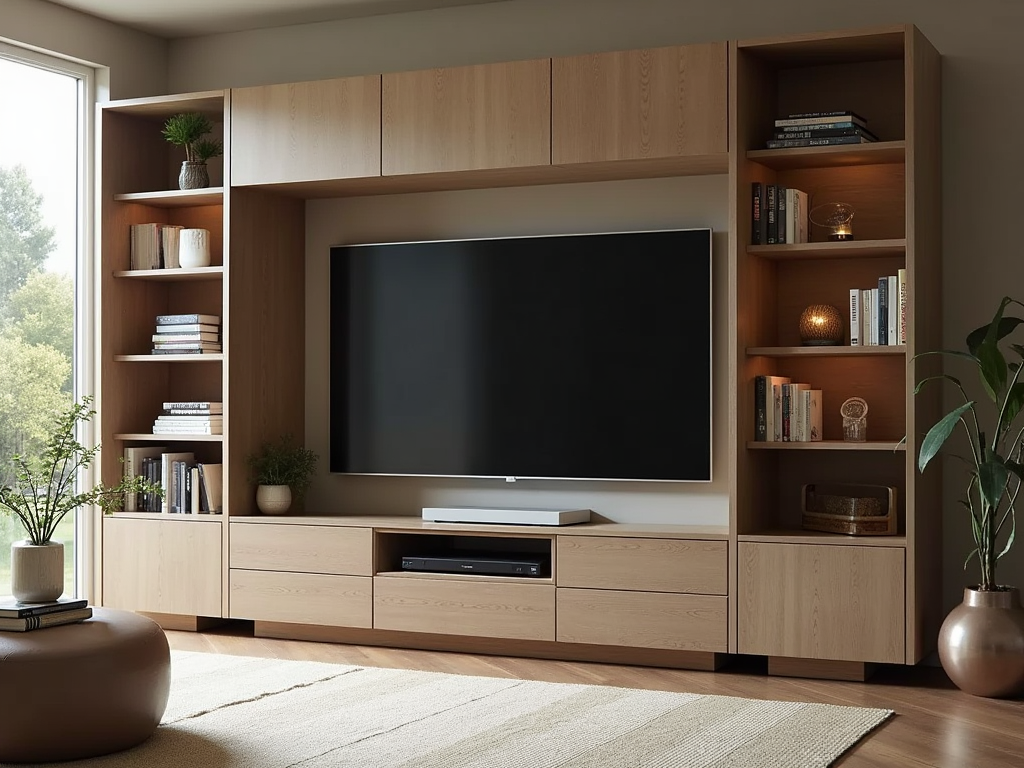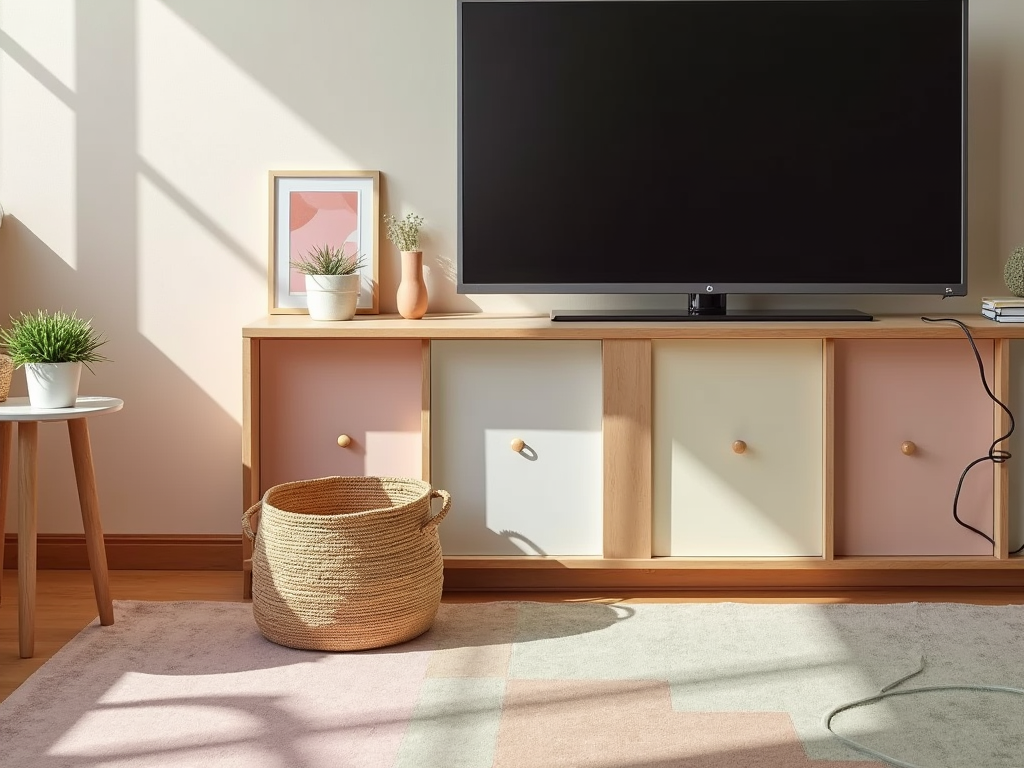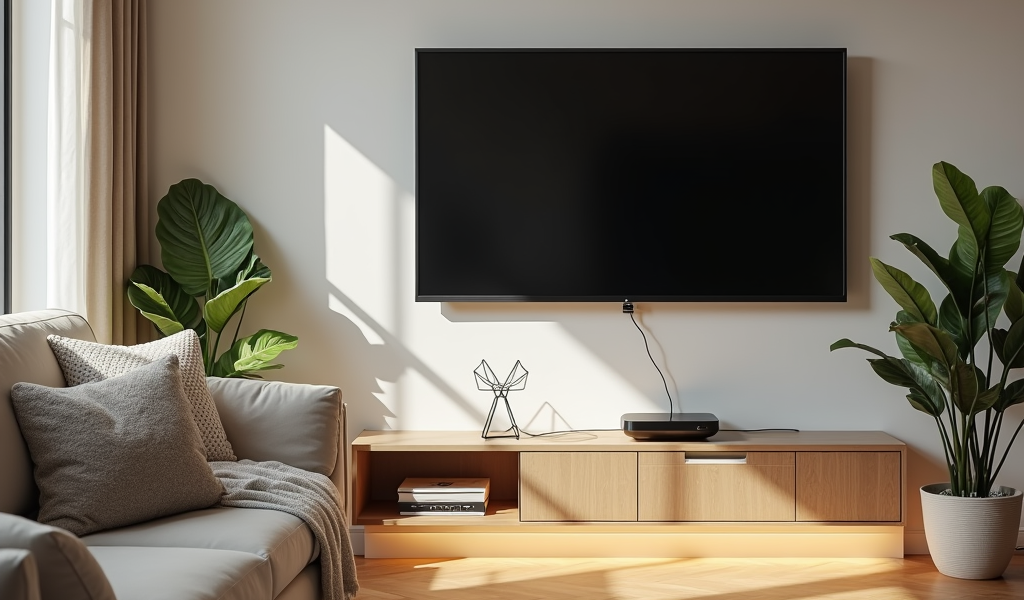In today’s modern living spaces, a clean and organized aesthetic is key, especially when it comes to home entertainment setups. Hiding TV wires not only enhances the visual appeal of your room but also improves safety by reducing tripping hazards. This article explores several effective methods to conceal those unsightly cables, from simple DIY solutions to professional installations, ensuring your space looks sleek and stylish.
1. Use Cable Management Solutions

One of the simplest ways to hide TV wires is by utilizing cable management solutions that are widely available in the market. These products provide an effective means to gather and conceal wires, allowing you to maintain a clutter-free area. They come in various styles, including:
- Cable Raceways: These are plastic or metal channels that attach to your wall, letting you run cables inside them efficiently.
- Cord Covers: Similar to raceways, but usually adhesive and designed to blend in with your wall color.
- Wire Clips and Ties: These help bundle wires together, keeping them organized behind your TV.
Using these solutions, you can create a more polished and tidy look while ensuring your wires are easily accessible for adjustments or replacements. Additionally, many of these products are inexpensive and easy to install, making them perfect for DIY enthusiasts.
2. Wall Mounting Your TV

Wall mounting your TV is an excellent option for minimizing visible wires. By securing your TV directly to the wall, you can eliminate the space between the furniture and the screen, resulting in fewer cables exposed. When wall mounting, consider the following:
- Decide on the Height: Ensure the TV is mounted at a comfortable viewing level.
- Choose a Quality Mount: Select a mount that is suitable for the size and weight of your TV.
- Run Cables Behind the Wall: If possible, cut holes in the drywall to route the cables directly behind it.
Not only does wall mounting provide a clearer view of the screen, but it also creates a modern look in your living area. Consider consulting a professional if you are unsure about the structural integrity of your walls or the installation process.
3. Use Decorative Solutions
If you’re looking for more creative ways to disguise TV wires, decorative solutions can add character to your room while providing functionality. You can consider options like:
- Decorative Boxes: Place a decorative box or basket under your TV stand to store excess cables.
- Faux Plants or Flowers: Use greenery strategically to drape over or frame wires and give a natural feel.
- Artwork or Picture Frames: Hang artwork that features hollow backs; these can conceal cables and add design flair.
By integrating these decorative elements, you can enhance your home’s aesthetics while camouflaging unwanted wires, ensuring your entertainment setup becomes an attractive focal point in your living area.
Another effective method for hiding TV wires is to use the furniture strategically placed around your television. Various types of furniture can naturally hide cables, such as:
- Entertainment Centers: These are designed to accommodate media equipment and can effectively hide wires with built-in compartments.
- TV Stands: Many modern stands come with cable management systems that help conceal wires.
- Shelves: Floating shelves around your TV can help manage the wires behind them while showcasing decor.
Arranging furniture thoughtfully not only provides a cohesive look but also creates a practical space for all your devices without showing the tangled mess of wires. Consider how you position items in the room to maximize both function and aesthetic appeal.
5. Go Wireless When Possible
With advancements in technology, many devices now offer wireless options which can reduce the clutter of wires significantly. Devices to consider replacing include:
- Wireless HDMI Adapters: These allow you to stream content from devices to your TV without the need for additional cables.
- Bluetooth Sound Systems: Instead of using wired speakers, consider Bluetooth options for your audio needs.
- Smart TVs: Many features of Smart TVs allow streaming content directly, eliminating the need for extra devices.
By opting for wireless technology, you can enjoy a cleaner look in your living area while still accessing your favorite media. While this may require an upfront investment, the lasting benefits of reduced clutter and modern functionality make it worthwhile.
Conclusion
Hiding TV wires is an important step in creating an organized and refined home entertainment space. Whether you employ cable management solutions, wall mount your TV, use decorative options, or go wireless, there are numerous methods to successfully conceal those unsightly cables. By taking the time to implement these ideas, you can enhance both the aesthetic appeal and safety of your living area. Remember, a clean setup not only looks better but also creates a more enjoyable viewing experience for you and your guests.
Frequently Asked Questions
1. How can I hide my TV wires without drilling holes?
You can use cable raceways or adhesive cord covers that can stick to the wall’s surface without the need for drilling. Additionally, furniture, decorative boxes, and plants can effectively camouflage the wires.
2. What tools do I need to wall mount my TV?
Common tools required for wall mounting include a stud finder, level, drill, screwdriver, and possibly a socket wrench. Be sure to follow the manufacturer’s instructions for your specific mount.
3. Are there wireless options for all devices?
While many devices now offer wireless capabilities, not all devices are wireless-compatible. Research each device’s specifications to see if a wireless option is available.
4. Can I hire someone to hide my TV wires for me?
Yes, hiring a professional installer ensures a clean and efficient setup. They can properly mount your TV and hide wires, leaving you with a sophisticated finish.
5. Is it safe to run TV wires through walls?
Yes, as long as you follow safety guidelines and use cables rated for in-wall use. Always check local building codes and consider consulting a professional for installation.










